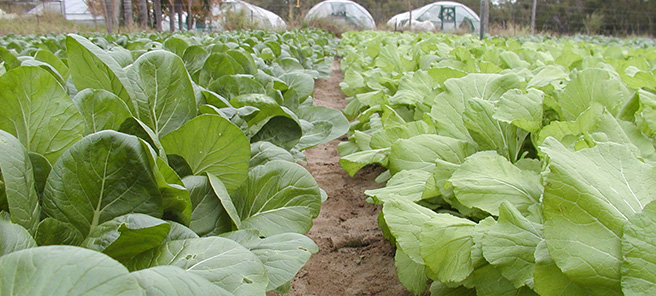There are two main effects of elevated CO2 on the nitrogen nutrition and growth of vegetable crops:
First, as CO2 levels increase, the level of nitrogen in the tissue of plants decreases. This is due to more efficient use of nitrogen by plants grown at high CO2 and means that less nitrogen is required to produce maximum yields than would be required at 1990 levels of CO2. For example, in cucumbers, spinach and fenugreek, N concentrations in the leaves were about 16% lower at high CO2 compared to plants grown at ambient CO2 levels.
The implication of this is that if CO2 levels continue to rise, vegetable crops will become more efficient in their use of nitrogen and therefore less will need to be applied. This may fit well with methodologies aimed at reducing N2O emissions based on better nitrogen management as part of the Carbon Farming Initiative.
The other main impact of nitrogen relates to the growth and yield stimulation that can be expected at higher CO2 levels. This response is highly dependent on the supply of nitrogen to the plants, as plants need adequate nitrogen to take advantage of the benefits of elevated CO2.
Luomala, E. M., L. Sarkka, et al. (2008). Altered plant structure and greater yield of cucumber grown at elevated CO 2 in a semi-closed greenhouse. Acta Horticulturae. S. d. Pascale, G. Scarascia Mugnozza, A. Maggio and E. Schettini: 1339-1346.
Jain, V., M. Pal, et al. (2007). “Photosynthesis and nutrient composition of spinach and fenugreek grown under elevated carbon dioxide concentration.” Biologia Plantarum 51(3): 559-562.
DAFF. (2013). “Carbon Farming Initiative.” 2013, from http://www.climatechange.gov.au/cfi.
Rogers, G. S., P. J. Milham, et al. (1996). “Sink strength may be the key to growth and nitrogen responses in N-deficient wheat at elevated CO 2.” Australian Journal of Plant Physiology 23(3): 253-264.
